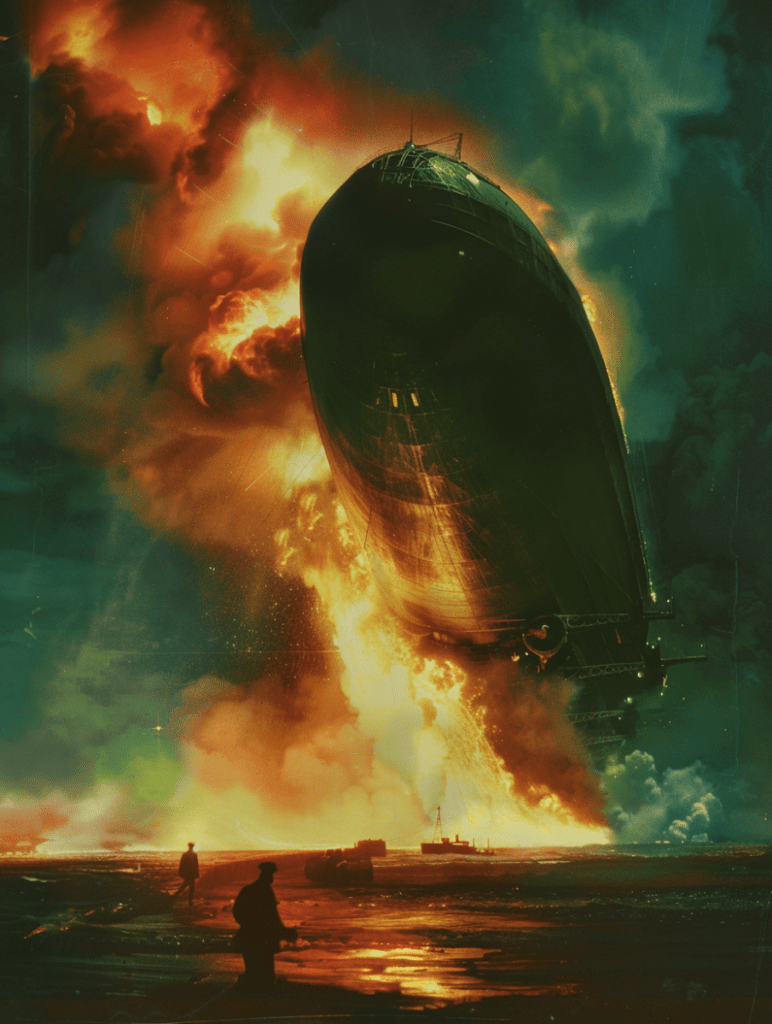On This Day May 6, 1937 a scene of unimaginable horror and tragedy unfolded before the world’s eyes on this fateful day, as the Hindenburg, the largest dirigible ever constructed and the pride of Nazi Germany, erupted into a catastrophic inferno upon its arrival in Lakehurst, New Jersey.
The massive airship, a marvel of engineering and a symbol of technological prowess, had embarked on its first transatlantic journey of the season, carrying 97 souls – crew and passengers alike – through the skies from Frankfurt. As it approached its destination, eager spectators and ground crew gathered to witness the majestic zeppelin’s docking.
However, in a matter of terrifying seconds, the unthinkable unfolded. As the Hindenburg descended to make its final approach, a sudden burst of flames engulfed the tail section, rapidly consuming the entire length of the 804-foot behemoth. Eyewitnesses watched in horror as the once-mighty airship, filled with highly flammable hydrogen gas, became an inferno, crashing to the ground in a twisted, smoldering wreckage.
The calamity claimed the lives of 35 people, both aboard and on the ground, leaving the world stunned and grappling with the shocking loss of life and the catastrophic end to what was once hailed as the future of air travel. The disaster’s haunting imagery, captured in chilling photographs and the famous radio broadcast by Herbert Morrison, forever etched itself into the collective memory of a generation.
The Hindenburg tragedy not only marked the end of the golden age of airships but also served as a sobering reminder of the inherent risks associated with technological advancement. It sparked intense debates over safety protocols and propelled the aviation industry towards the development of more robust and reliable modes of air transportation, paving the way for the eventual dominance of heavier-than-air aircraft.
